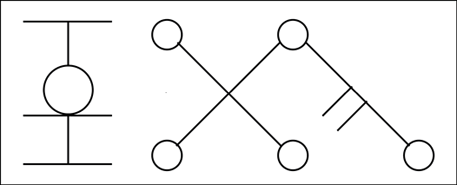The core of "Magitians Discovered", part 2
What the core of "Magitians Discovered" consists of, part two, the rituals.
"The Magitians Discovered" revolves around core texts authored by magicians that were added to the 1665 edition of Reginald Scot's "Discoverie of Witchcraft". Unlike Scot's text, which was skeptical of witchcraft, the additions were authored by believers in magic, who were in a sense writing to correct Scot's views on the subject of magical creatures and practice.
The additions consist of a treatise on ghosts, elemental spirits, and demons, and nine chapters of ritual material.
The ritual material revolves around aerial spirits of various sorts. The nine chapters include four chapters which directly refer to calling up aerial spirits of various types.
The first is a ritual to call up the three "Hunters of the North", which are easily identifiable with the Wild Hunt, and are identified as a aerial spirits. The second is a general ritual to call up aerial spirits that uses preparations drawn from the Heptameron.
The third and fourth are related, and deal with calling up the thunder spirits Luridan and Balkin. These spirits are referenced in the treatise material, where Luridan is described as a spirit that once inhabited the Orkney isles and now lives in the "Northern Mountains" of Norway, serving Balkin. Balkin himself is described as being the father of the fairies that live in the Orkney Isles and in the northern Scottish regions of Southerland and Caithness.
Both Luridan and Balkin are said in the treatise and in the rituals to do battle with the volcano spirits that inhabit Mt. Hekla in Iceland. Fire elementals are described in the treatise as being tempted to work for demons, and so Luridan and Balkin's fight against them is presumably to limit demonic influence in the world.
The rituals to call both of them up include the unique feature of actually drawing the volcano from which the fire spirits come within the circle. The point of doing this is to use the fire spirits, as well as names of God, to compel Balkin and Luridan to appear. In fact, Balkin is asked to appear in both the names of God and in the name of Coronzon, which is an Enochian name for Satan that is linked here with the volcano spirits.
Of the two rituals for evocation of Luridan and Balkin, the one for Luridan is the more 'primitive' of the two, missing many of the features that are present in the evocation of Balkin. The latter evocation combines the volcano references with transliterated words from Hebrew, which appear to be very accurate, as well as other features more typical of the grimoires. It's also the ritual which contains the reference to Coronzon.
The ritual material contains, as well, instructions on summoning a personal genius into a crystal, which uses a modified version of the text of the Ars Paulina. Arguably, the idea of a personal genius here is linked with the aerial spirits, in that the treatise blurs the categories between the Genius Loci and the personal Genius. The personal Genius also plays a large role in the treatise, where seven good and seven evil genii' are described, with sigils given for three of them. Very interestingly, many of the names of the good and evil genii are taken from John Dee's "A True & Faithful Relation".
The last actual ritual chapter in the ritual material consists of two accounts of necromancy, including an account of a reanimation of a corpse. While containing actual magical material, this chapter, for the most part, reads more like a dramatic retelling than actual instructions for ritual. In this, it resembles, albeit inexactly, the account of a reanimation of a corpse in Lucan's poem/play "Pharsalia". It ends with a shorter formula for calling up a deceased spirit. This account, it should be noted, proved to be very popular with subsequent writers, probably because of its dramatic effect, and has percolated into places such as A.E. Waite's "Book of Black Magic", via Ebenezer Sibly's reproduction of it in his "New and Complete Illustration of the Celestial Science of Astrology".
The remaining two chapter of the ritual material consist of general instructions on how to consecrate implements used in rituals and how to construct the verbal formulas for the same, as well as alternate instructions for circle construction. One of the chapters largely consists of excerpts from the Heptameron on these issues, while the other is linked more closely to traditions of Christian influenced folk magic.
Created: 2016-04-05 01:52:38

